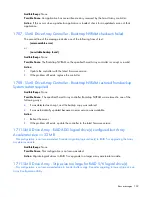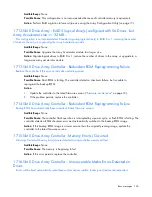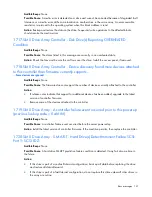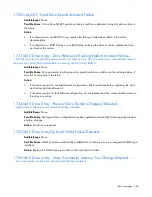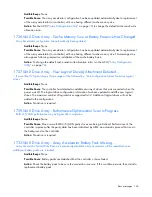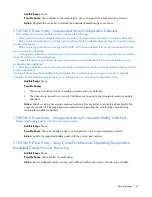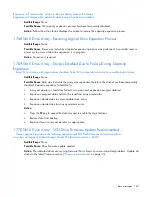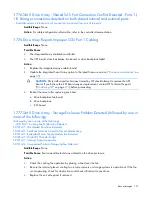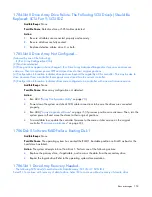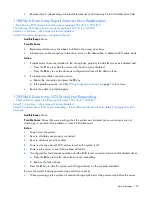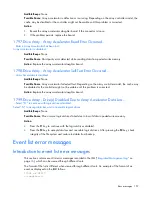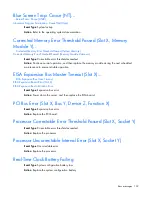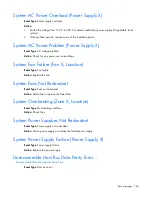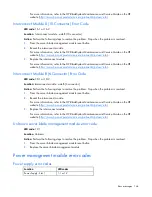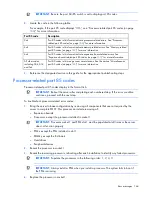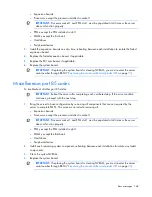
Error messages 153
1784-Slot X Drive Array Drive Failure. The Following SCSI Drive(s) Should Be
Replaced: SCSI Port Y: SCSI ID Z
Audible Beeps
: None
Possible Cause
: Defective drive or SCSI cables detected.
Action
:
1.
Be sure all cables are connected properly and securely.
2.
Be sure all drives are fully seated.
3.
Replace defective cables, drive
X
, or both.
1785-Slot X Drive Array Not Configured...
(followed by one of the following):
...(1) Run Array Configuration Utility
(2) No drives detected
(3) Drive positions appear to have changed – Run Drive Array Advanced Diagnostics if previous positions are
unknown. Then turn system power OFF and move drives to their original positions.
(4) Configuration information indicates drive positions beyond the capability of this controller. This may be due to
drive movement from a controller that supports more drives than the current controller.
(5) Configuration information indicates drives were configured on a controller with a newer firmware version.
Audible Beeps
: None
Possible Cause
: Drive array configuration not detected.
Action
:
•
Run ACU ("
Array Configuration Utility
" on page
70
).
•
Power down the system and check SCSI cable connections to be sure the drives are connected
properly.
•
Run ADU ("
Array diagnostic software
" on page
76
) if previous positions are unknown. Then, turn the
system power off and move the drives to their original positions.
•
To avoid data loss, update the controller firmware to the same or later version on the original
controller ("
Firmware maintenance
" on page
80
).
1786-Disk 0 Software RAID Failure, Booting Disk 1
Audible Beeps
: None
Possible Cause
: The operating system has marked the RAID 1 bootable partition on Disk 0 as bad or the
hard drive has failed.
Action
: The system attempts to boot from Disk 1. Perform one of the following actions:
•
Replace the primary drive, if applicable, and re-mirror the data from the secondary drive.
•
Repair the logical drive. Refer to the operating system documentation.
1786-Slot 1 Drive Array Recovery Needed...
...The following SCSI drive(s) need Automatic Data Recovery: SCSI Port Y: SCSI ID Z
Select F1 to continue with recovery of data to drive. Select F2 to continue without recovery of data to drive.

